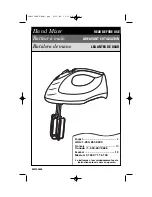
MG10/2
17
Front & Rear Panels
1
GAIN Control
Adjusts the input signal level. To get the best balance between
the S/N ratio and the dynamic range, adjust the level so that the
peak indicator (
2
) comes on only at about maximum input
level.
The –60 to –16 scale indicates the MIC input adjustment level.
The –34 to +10 scale indicates the LINE input adjustment
level.
2
PEAK Indicator
Detects the peak level of the post-EQ signal, and lights up red
when the level reaches 3 dB below the clipping level. For
XLR-equipped stereo input channels (3/4 and 5/6), detects both
post-EQ and post-mic-amp peak levels, and lights red if either
of these levels reaches 3 dB below the clipping level.
3
Switch (High Pass Filter)
This switch toggles the HPF on or off. To turn the HPF on,
press the switch in (
). The HPF cuts frequencies below
80 Hz. (But note that regardless of the switch setting, the mixer
does not apply this HPF to the line inputs of stereo input chan-
nels.)
4
Equalizer (HIGH, MID, and LOW)
This three-band equalizer adjusts the channel’s high, mid, and
low frequency bands. Setting the knob to the
▼
position pro-
duces a flat frequency response. Turning the knob to the right
boosts the corresponding frequency band, while turning to the
left attenuates the band. The following table shows the EQ
type, base frequency, and maximum cut/boost for each of the
three bands.
5
AUX Controls
Use the AUX control to send the channel’s signal to the AUX1
or AUX2 bus.
Turn the knob to the left of the
▼
mark to feed the signal to the
AUX1 bus, or to the right of the
▼
to feed to the AUX2 bus.
The volume of the feed increases as you move the knob away
from the
▼
position. If you set the knob exactly to the
▼
posi-
tion, the mixer will not send the signal to either of the AUX
buses.
Note that the signal to the AUX1 bus is a pre-fader signal, and
is not affected by the channel fader. The signal to the AUX2
bus is a post-fader signal, and will always pass through the
channel fader before moving to the bus.
If you are using stereo channels, the signals from the L (odd)
and R (even) channels are mixed and sent to the AUX1 and
AUX2 buses.
6
PAN Control (CHs 1 and 2)
PAN/BAL Control (CHs 3/4 and 5/6)
BAL Control (CHs 7/8 and 9/10)
The PAN control determines the positioning of the channel’s
signal on the Stereo L and R buses.
The BAL control knob sets the balance between left and right
channels. Signals into the L input (odd channel) feed to the Ste-
reo L bus; signals into the R input (even channel) feed to the
Stereo R bus.
On channels where this knob provides both PAN
and BAL controls: The knob operates as a PAN con-
trol if you are inputting through the MIC jack or into
the L (MONO) input only, and operates as a BAL
control if you are inputting into both L and R inputs.
7
Channel Fader
Adjusts the output level of the signal being input to the chan-
nel. Use these faders to adjust the volume balance among the
various channels.
To reduce noise, set the fader knobs for unused
channels all the way to the left (to the minimum set-
ting).
Channel Control Section
1
5
5
2
5
6
6
6
7
7
7
4
3
Channels
1 and 2
(Monaural)
Channels
3/4 and 5/6
(Stereo)
Channels
7/8 and 9/10
(Stereo)
Band
Type
Base Frequency Maximum Cut/Boost
HIGH
Shelving
10 kHz
±15 dB
MID
Peaking
2.5 kHz
LOW
Shelving
100 Hz
NOTE
NOTE
MG10_E.book Page 17 Monday, May 26, 2003 1:52 PM












































